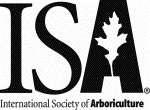
| Current Articles |
| Browse Archives |
| Search |
| Contact Us |
| AUF Home |
 |
Arboriculture & Urban Forestry Online
| Volume 42, Issue 5 —
September 2016
https://www.isa-arbor.com/Publications/Arboriculture-Urban-Forestry |
|
An Assessment of the Remodeling of Bifurca-tions in Hazel (Corylus avellana L.) in Response to Bracing, Drilling, and Splitting (View PDF) Duncan Slater and A. Roland Ennos Abstract: The ability of trees to remodel their woody structure after injury or strain to outer tissues greatly assists in their survival; however, this remodeling process is complex because it is influenced by many factors. The speed and extent of remodeling of branch junctions in trees around a mechanical flaw, such as included bark, will dictate to what extent and for how long the junction is mechanically weakened. In this study, 100 normally formed bifurcations in semi-mature hazel (Corylus avellana L.) were artificially modified by being rodbraced, drilled through the apex or split, and then left to grow in situ. Two further groups were identified as controls: 120 normally formed bifurcations and 70 bark-included bifurcations. After two to four years, these bifurcations were harvested and underwent tests of their bending strength. The bifurcations rigidly braced over three growing seasons developed adverse taper in their branches and had only 70.5% of the bending strength of the normally formed bifurcations. Bifurcations with the central 20% of the xylem drilled out of them were capable of recovering fully from this defect; in contrast, split bifurcations were found to be highly vulnerable to failure during wind-loading events. This study concludes that a bifurcation may be considered compromised in its bending strength if its apex is compromised, but that semi-mature bifurcations in hazel do exhibit a good ability to remodel after injury. The role of thigmomorphogenesis in this remodeling process is assessed with reference to the rod-braced specimens that suffered no significant mechanical perturbation at their apices. Keywords: Bark Inclusion; Bifurcation; Biomechanics; Bracing; Corylus avellana L.; England; Hazel; Lancashire; Remodeling; Thigmo-morphogenesis; Tree Crotch; Tree Fork |
Current Articles
| Browse Archives | Search | AUF Home | ISA Home
| Get Acrobat